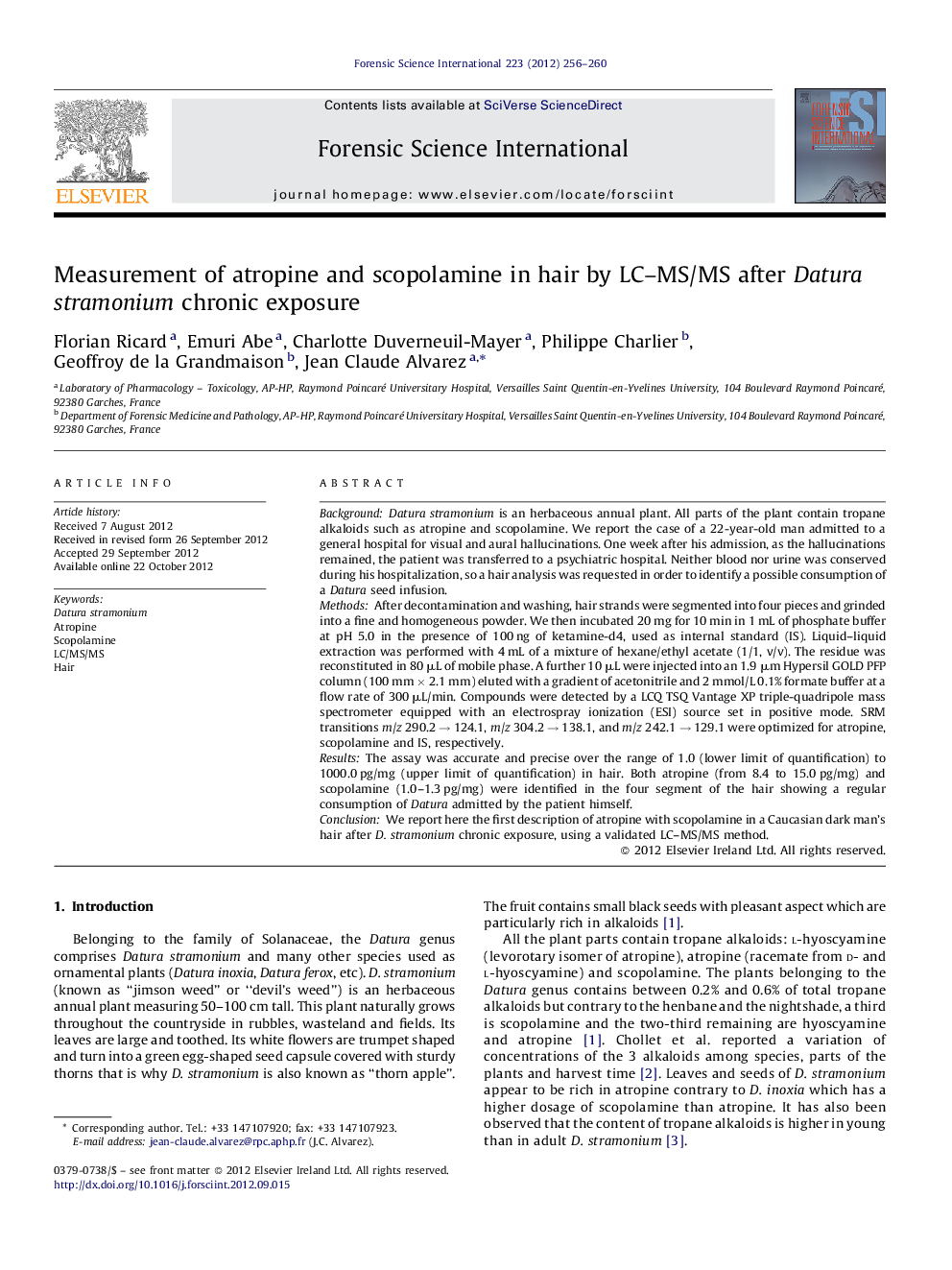| Article ID | Journal | Published Year | Pages | File Type |
|---|---|---|---|---|
| 96374 | Forensic Science International | 2012 | 5 Pages |
BackgroundDatura stramonium is an herbaceous annual plant. All parts of the plant contain tropane alkaloids such as atropine and scopolamine. We report the case of a 22-year-old man admitted to a general hospital for visual and aural hallucinations. One week after his admission, as the hallucinations remained, the patient was transferred to a psychiatric hospital. Neither blood nor urine was conserved during his hospitalization, so a hair analysis was requested in order to identify a possible consumption of a Datura seed infusion.MethodsAfter decontamination and washing, hair strands were segmented into four pieces and grinded into a fine and homogeneous powder. We then incubated 20 mg for 10 min in 1 mL of phosphate buffer at pH 5.0 in the presence of 100 ng of ketamine-d4, used as internal standard (IS). Liquid–liquid extraction was performed with 4 mL of a mixture of hexane/ethyl acetate (1/1, v/v). The residue was reconstituted in 80 μL of mobile phase. A further 10 μL were injected into an 1.9 μm Hypersil GOLD PFP column (100 mm × 2.1 mm) eluted with a gradient of acetonitrile and 2 mmol/L 0.1% formate buffer at a flow rate of 300 μL/min. Compounds were detected by a LCQ TSQ Vantage XP triple-quadripole mass spectrometer equipped with an electrospray ionization (ESI) source set in positive mode. SRM transitions m/z 290.2 → 124.1, m/z 304.2 → 138.1, and m/z 242.1 → 129.1 were optimized for atropine, scopolamine and IS, respectively.ResultsThe assay was accurate and precise over the range of 1.0 (lower limit of quantification) to 1000.0 pg/mg (upper limit of quantification) in hair. Both atropine (from 8.4 to 15.0 pg/mg) and scopolamine (1.0–1.3 pg/mg) were identified in the four segment of the hair showing a regular consumption of Datura admitted by the patient himself.ConclusionWe report here the first description of atropine with scopolamine in a Caucasian dark man's hair after D. stramonium chronic exposure, using a validated LC–MS/MS method.
